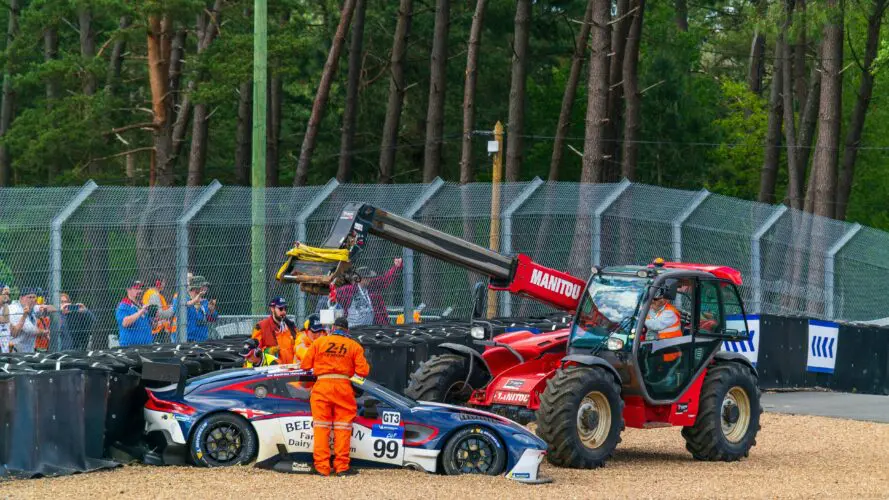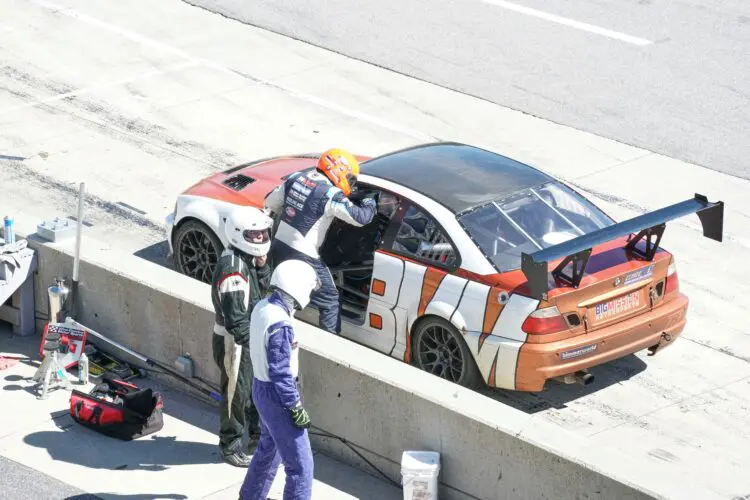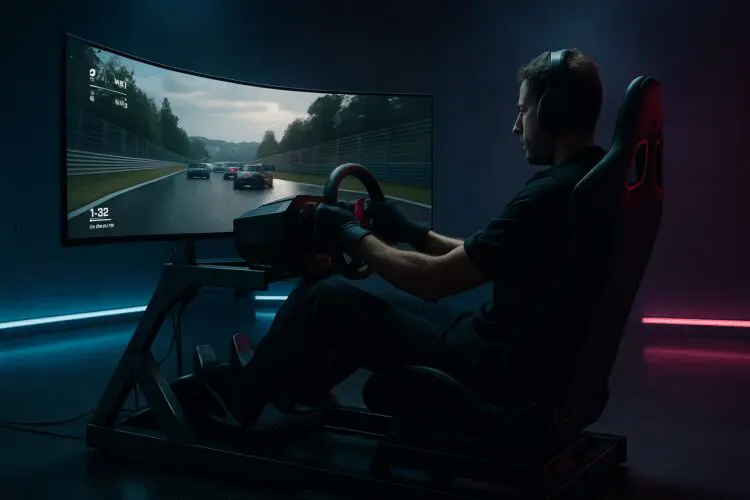The Chivalry Code: Then and Now in Racing
Why Chivalry Still Matters in Modern Racing

On the final lap of a Moto 2 Grand Prix, rider Hafizh Syahrin crashed at an astonishing 170 km/h. Mere seconds later, competitor Somkiat Chantra made a split-second decision. He abandoned his own race, sprinted across the gravel, and physically steadied Syahrin until the medical team arrived.
Chantra forfeited a guaranteed top-ten finish, but the crowd’s roar was as loud as if he’d taken the checkered flag. Such spontaneous acts of sportsmanship still dazzle us, but they are part of a code with roots stretching back centuries.
Chivalry vs. Sportsmanship: Why Words Matter
The terms are often used interchangeably, but their origins are distinct. “Chivalry” was the moral and military code of medieval knights, emphasizing courage, courtesy, honor, and protecting the weak.
In contrast, “sportsmanship” is a 19th-century term for ethical conduct in sport, encompassing fair play and integrity. Modern racing borrows its language and expectations from both, blending these age-old ideals with rulebooks that evolve with every new season.
| Key Insight: Chivalry is the ancient moral source code for knights, while modern sportsmanship is its direct descendant—the official rulebook for ethical conduct and fair play in competition. |
Medieval Chivalry at a Glance
Knighthood was a fusion of Christian doctrine, feudal duty, and martial prowess. Chroniclers formalized these ideals into tenets such as believing the Church’s teachings, defending the weak, and never fleeing from a foe.
Yet, the reality of tournaments often blurred the line between gallantry and brutality. As warfare evolved, so did its technology; armor advanced from simple chainmail to fully articulated plate. Modern enthusiasts can still study the intricate construction details through resources such as Medieval Collectibles’ knight armor, a fascinating reminder of chivalry’s tangible technology.
End of the Era & Enduring Legacy
The advent of gunpowder gradually diminished the knight’s central role on the battlefield. Despite this, the chivalric code was kept alive in literature, though research indicates that over 90% of these original manuscripts have been lost.
The surviving epic tales of Sir Thomas Malory’s *Le Morte d’Arthur* romanticized the knightly ideal. These stories seeded the concepts of gentlemanly conduct that would eventually blossom into the modern notion of sporting fair play.
Official Racing Codes of Conduct

Image by Bertrand Turpin from Unsplash.
Alt text: Marshals recover a crashed race car.
Today, chivalry’s spirit is codified in the official rulebooks of motorsport’s governing bodies. The FIA International Sporting Code defines “unsafe maneuvers” and “unsportsmanlike conduct” with a tiered penalty system. The FIM Regulations for motorcycle racing even oblige riders to aid fallen competitors when it is safe to do so.
Other disciplines follow suit, with NASCAR citing “actions detrimental to stock-car racing” and IndyCar issuing points deductions for avoidable contact. In horse racing, the Jockey Club can disqualify a jockey for failing to protect an injured horse. This focus on welfare has shown results, as HISA reported a significant decrease in racing-related fatalities[a].
These rules are celebrated through awards recognizing character, such as the Barry Sheene Medal in the Supercars Championship, won a record five times by Craig Lowndes. Each organization layers safety technology, from HANS devices to energy-absorbing barriers, onto these ethical mandates.
The Unwritten “Gentleman’s Rules”
Beyond the official regulations, an unwritten code still governs the paddock. Veteran drivers salute track marshals on their cool-down lap, and competitors leave the racing room when a title contender is lapping them. In the garages, borrowing tools is customary, and a defeated jockey congratulates the winner before dismounting.
This deep-seated respect is crucial in a high-risk environment. As Indy 500 champion Takuma Sato once said, “Your rival today might save your life tomorrow. Respect is insurance.”
| Quote: “Your rival today might save your life tomorrow—respect is insurance.”- Takuma Sato, Indy 500 Champion |
Medieval vs. Modern: A Quick-Glance Comparison
| Medieval Commandment | Modern Racing Equivalent | Purpose / Outcome |
| “Defend the weak” | Stop to aid a stricken rival | Safety, empathy |
| “Never attack an unarmed foe.” | No overtakes under yellow flags | Hazard avoidance |
| “Fight with honor” | No deliberate contact | Integrity |
| “Serve your lord loyally.” | Represent team & sponsors professionally | Brand trust |
| “Speak truth” | Post-race scrutineering honesty | Sporting justice |
Chivalry in Action

Image by Jaxon Smith from Unsplash.
Alt text: Pitstop crew assists race car driver.
History is filled with moments that have tested this code. A famous breach occurred at Suzuka in 1989, when an intentional collision sparked harsher FIA penalties for “premeditated contact.” Conversely, the code was heroically upheld at the Nürburgring in 1976.
When Niki Lauda was trapped in his flaming car, fellow drivers leaped from their own vehicles to pull him free. They sacrificed their own races without hesitation. Each incident has nudged governing bodies toward clearer ethical language and improved rescue protocols.
| Key Insight: The code’s true measure isn’t in the rulebook, but in moments of crisis. Sacrificing personal gain for a rival’s safety is the ultimate expression of modern chivalry, defining the sport’s character. |
Criticism & Controversy
The concept is not without its critics. Some argue that “gentleman’s rules” can mask a form of elitism, being more accessible to drivers from costly feeder series. Female and non-Western racers have often reported facing bias when trying to assert the same code of conduct.
Furthermore, the immense pressure from million-dollar sponsorships can create a tense conflict between profit and principle. This occurs when teams are pushed to race despite dangerous, rain-soaked track conditions.
| Warning/Important: The chivalry code faces its greatest challenge from commercial pressures. Million-dollar sponsorships can create a powerful conflict, pushing teams and drivers to prioritize profit over principle and safety. |
Cross-Cultural Echoes
The spirit of honorable conduct in competition is a global concept. Japan’s Bushidō code for samurai valorized honor and self-sacrifice, ethics that are echoed today when Super GT teams bow trackside after an infraction.
The International Olympic Committee’s prestigious Pierre de Coubertin medal, awarded for acts of exceptional fair play, reinforces chivalry’s global resonance far beyond the racetrack.
Chivalry in Hyper-Commercialized Racing

Alt text: Immersive car racing simulation setup with curved monitor and racing seat.
As motorsport evolves, so too will its ethical debates. In the growing world of esports leagues[b], digital racers now debate “ghosting” etiquette and reboot privileges.
The rise of autonomous-vehicle contests may shift the responsibility for fair play from the driver to the coder. However, the fundamental spirit of fair competition will still require human guardianship.
Some insiders have proposed a unified “Spirit of Racing Charter” to accompany safety tech, mirroring the renowned “Values Charter” of world rugby.
Chivalry Challenge
From plate-clad knights to heroes in carbon fiber, the chivalry code persists, adapted but fundamentally unbroken. The next time you witness a profound act of on-track courtesy, remember its centuries-old lineage.
[a]Fact checked: https://hisaus.org/news/racing-related-fatality-rate-at-hisa-racetracks-hits-historic-low-in-2024
[b]Fact checked: https://scholarworks.bgsu.edu/cgi/viewcontent.cgi?article=1089&context=hmsls_mastersprojects
Read more on
MyCarHeaven are on Instagram. Go check us out and do follow us.
Go visit the MyCarHeaven Instagram page. We post regular quality content, predominantly focused on classic cars, supercars, hypercars and car shows. We also feature all our competitions here, where you will have the chance IF YOU FOLLOW US and you follow the competition entry criteria, you could be in with a chance of winning tickets to the best UK car shows, and other automotive stuff.
Go to the MyCarHeaven Instagram account here. Advertisement
Advertisement Advertisement
Advertisement Advertisement
Advertisement Advertisement
Advertisement




